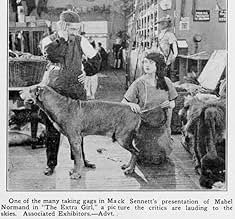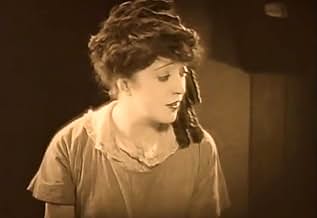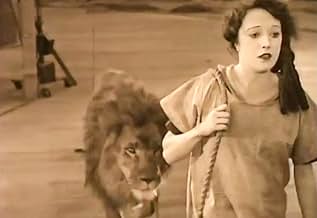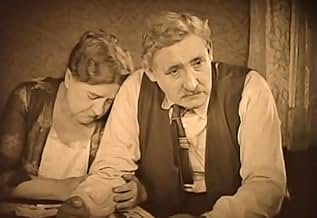Ajouter une intrigue dans votre langueA small town girl dreams of movie stardom. A switched photo wins her a movie contract. However, when she arrives Hollywood, she is assigned to the props department. Her parents visit and inv... Tout lireA small town girl dreams of movie stardom. A switched photo wins her a movie contract. However, when she arrives Hollywood, she is assigned to the props department. Her parents visit and invest some money with a very shifty individual.A small town girl dreams of movie stardom. A switched photo wins her a movie contract. However, when she arrives Hollywood, she is assigned to the props department. Her parents visit and invest some money with a very shifty individual.
- Réalisation
- Scénario
- Casting principal
- Ma Graham
- (as Anna Hernandez)
- Actor in Wardrobe Line
- (as Andre Beranger)
- Comedian in Derby
- (non crédité)
Avis à la une
Opening with a title card: "Between the Rocky Mountains and Pittsburgh, but a long way from Hollywood, lies River Bend (Illinois) where the Graham family lives," followed by introduction to characters: "Pa" Graham (George Nichols), who runs a River Bend garage that was once his blacksmith shop; Aaron Appleton (Vernon Dent), a well-to-do druggist and Graham's choice for his future son-in-law; "Ma" Graham (Anna Hernandez) a wife and mother who copes with her movie struck daughter, Sue (Mabel Normand) by sitting back in her rocking chair and watching her act, as does Dave Giddings (Ralph Graves), Sue's childhood sweetheart and neighborhood mechanic. Realizing that their attachment to one another is more than "puppy love," "Pa" Graham insists Dave is to no longer visit Sue, and have Aaron calling and have her as his future bride. While answering a movie contest advertisement, Sue submits her frightful photograph. About to mail out her entry form, Sue finds she's unable to leave her parents and decides against it. Wanting to see Sue fulfill her dream, Dave has Belle Brown (Charlotte Mineau), known as the "grass widow," submit the photo herself. Wanting Dave all to herself and Sue out of the way, Belle substitutes her own photo over Sue's instead. Having not heard anything about the movie contest, Sue reluctantly agrees to please her father by marrying Aaron. Moments before the wedding is to take place, Dave arrives with a telegram that Sue has won the contest, and must catch the next train to Hollywood within fifteen minutes. With Dave's help, Sue escapes from her dreaded wedding and races over to the train station with Pa Graham and Aaron in hot pursuit. As the train pulls out, Sue watches her father at a distance and tearfully bids him farewell, with the old man waving back with his rejected would-be son-in-law beside him. Arriving at the Golden State Film Company, Sue meets with the studio manager who realizes the photos have been switched. Instead of getting a screen test, the studio manager, telling Sue to return home, decides on giving her a break working in the wardrobe department. Sometime later Dave comes to Hollywood, and to be near her, acquires employment at the same studio as a stage hand. As for the Grahams, it's Christmas and they become lonely for Sue. The couple decide to sell their home and accompany their daughter in the movie capital of the world, in spite the fact that she's not yet acted in a motion picture. Situations become more complex when Sue falls into the clutches of T. Philip Hackett (Ramsey Wallace), who swindles her parents by investing their entire savings in some"worthless oil stock.
Mabel Normand, whose movie career began with comedy shorts as early 1910, was nearing the end of her career by the time THE EXTRA GIRL went into theatrical release in early 1923. With other movies similar in theme dealing with the ups and downs of a movie hopeful (The 1926 release of ELLA CINDERS starring Colleen Moore, being one of the better ones), THE EXTRA GIRL goes a step further, taking a realistic approach as to what happens when a talented small town girl fails to succeed. Not precisely as sad as it all seems, THE EXTRA GIRL does present itself with some good intentional comedy. The most famous one involving Mabel mistaking a lion for a tamed one named Teddy, toggling the king of beasts on a rope behind her, eventually leading to a wild chase around the studio set after she discovers that she has the wrong lion. This five minute sequence must have stirred roars of laughter back then. Another funny scene finds Mabel making her screen test opposite actor William Desmond in a period setting wearing her hoop skirt and pantelettes. During the filming, she accidentally sits on a black glove leaving a hand print on her bottom tush, conveniently captured on film whenever she bends down. A screen test for a costume drama provokes laughter from the staff working behind the camera, but distresses the director, of course.
Aside from appearing a bit too old to be wearing those Mary Pickford curls during most of the story, indicating that the character of Sue Graham being a teenager or a girl of her early twenties, Mabel Normand, does show signs of exhaustion and worry, possibly due to personal problems of her own or over extensive retakes during production.
THE EXTRA GIRL, at 70 minutes (possibly longer in its initial premiere), was one of thirteen selected silent features to be presented during the summer months in the PBS weekly series of "The Silent Years" (1971), as hosted by Orson Welles, accompanied with an organ score by Jack Ward. In later years it turned up on cable television's Turner Classic Movies (TCM premiere: September 20, 2012, with piano score). As for her final screen appearance in a feature length comedy, the movie itself isn't as good as one would want it to be, but in spite of mixed comments and reputation, it can only be enjoyed by those who appreciate rare finds like Mabel Normand as THE EXTRA GIRL. Available on video and DVD from Kino International. (***)
"The Extra Girl" is good introduction to the work of a talented comedienne who deserves to be better know today.
Well, this film is well done and full of fun - Mabel is a charmer in this, as usual, I just love her expressive face! There is a lively, fast chase at one point, where Mabel is trying to get to the train station before she has to get married, with dad and Applejohn in hot pursuit - all well done on real rural (looked like suburban twenties L.A.) streets. I also enjoyed the scene where Mabel leads a lion through the studio, under the belief it is actually "Teddy the dog" in a lion suit - quite amusing. The DVD version of this I saw featured a very decent looking print and excellent piano score by composer Ben Model that really suited the film well. A very entertaining film.
Note: the grass widow, Belle Brown, was listed in the film credits as being played by Mary Mason. The IMDb lists her as played by Charlotte Mineau. Did Mineau use this other name?
Le saviez-vous
- AnecdotesPenultimate feature film of Mabel Normand. She would not make another film for three years until her last feature Raggedy Rose (1926). Four shorts would follow in 1926-7 and she would pass away in 1930.
- Citations
Dave Giddings: Sue wants to go into pictures. Do you think she has a chance?
- ConnexionsFeatured in The Great Chase (1962)
Meilleurs choix
Détails
- Durée
- 1h 8min(68 min)
- Mixage
- Rapport de forme
- 1.33 : 1



































